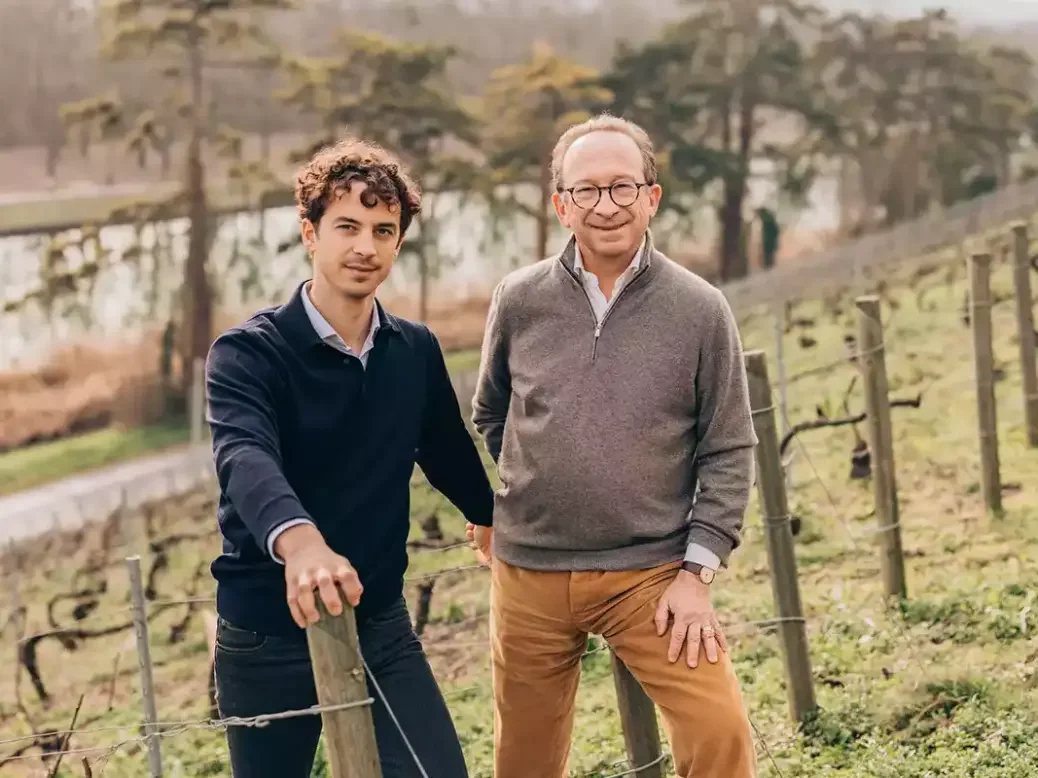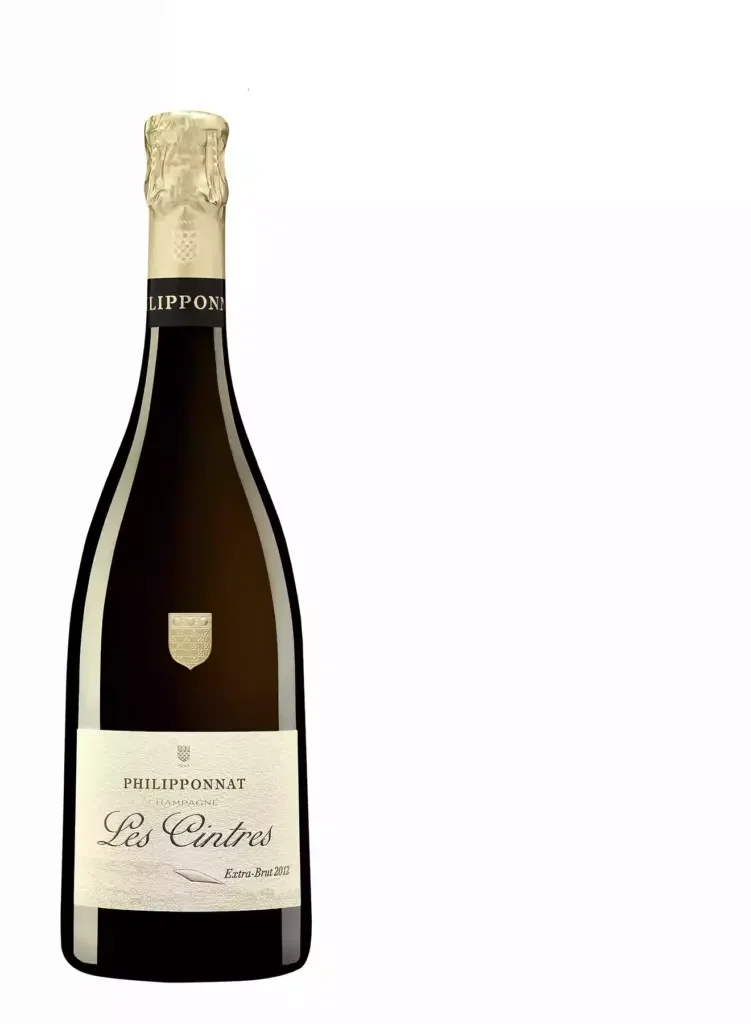
The three most recent offerings from Philipponnat’s famed Clos des Goisses monopole show very different sides of a special vineyard, says Essi Avellan MW.
For a keenly awaited first sample of Champagne Philipponnat’s upcoming releases, we gathered for a tasting and omakase dinner at chef Yasuhiro Ochiai’s Maru in London’s Mayfair. Every year, Philipponnat disgorges the different Clos des Goisses cuvées in March and previews them in September before releasing in January the following year. This time, we were in for a discovery of Clos des Goisses 2014, Les Cintres 2012, and Clos des Goisses LV 1998.
Clos des Goisses is a pioneering single-vineyard Champagne that—according to its current philosophy—is now produced every vintage. A mere 12 vintages have been missed since Philipponnat first created the cuvée in 1935, and Charles Philipponnat has made sure that none was skipped since he took over the running of the house in 2000. The steep vineyard overlooking the Marne canal in Mareuil-sur-Aÿ encompasses 5.83ha (14.4 acres) today, with two thirds planted to Pinot Noir and one third to Chardonnay. The sun-kissed, south-facing site on pure chalk terrain guarantees the success of Clos des Goisses even in the most challenging vintages. But an equally big role is granted to the rigorous selection and wide-ranging blending enabled by the vast size of the vineyard.
“We exclude everything that is not perfect from the Clos des Goisses blend. Also, the crop from the younger vines is not included, nor are the inferior taille parts of the pressings,” Charles Philipponnat states. In fact, Clos des Goisses is very much a blended wine, despite its single-site nature. This Philipponnat monopole vineyard comprises as many as 16 plots, planted at different times, with the oldest vines dating back to 1964. Batches of different grape varieties, clones, rootstocks, and vine age are selectively blended together, and fermentation in small barrels allows many more blending options. Thus, despite the theoretical potential being much higher, today’s average production per vintage amounts to between 15,000 and 25,000 bottles only.
Philipponnat summarizes the nature of the 2014 vintage bottling as follows: “The high-yielding 2014 was the second cool vintage in a row. But as distinct from the dense 2013, the 2014 is much less concentrated. It does not have the weight that Clos des Goisses usually has. Instead, it is a fresh and floral vintage, which aromatically reminds me of the 2004.”
Since 2006, Philipponnat has in certain vintages bottled the central Cintres part of Clos des Goisses as a separate cuvée. It is blended from the 0.27ha (0.66-acre) Petits Cintres and the 0.31ha (0.76-acre) Grands Cintres, which together form the heart of the Clos des Goisses, sitting on the steepest part of the slope on pure chalk with very shallow topsoil. If the 2014 was a particularly light Clos des Goisses, the 2012 Les Cintres is its most powerful iteration yet, with the impressive potential alcohol level of 12 degrees and pH below 3. “We separate it only when the crafting of the main Clos des Goisses cuvée permits it. Moreover, we never use more than one third of the grapes for it, because we don’t want Les Cintres to impoverish Clos des Goisses,” Philipponnat assures us.
The production volumes are indeed minuscule—around 2,000 bottles per vintage. The monumental 2012 is only the fifth vintage produced, after the 2006, 2008, 2009, and 2010. Because it is so hugely concentrated but also so markedly mineral, Charles Philipponnat foresees an even greater aging potential for Les Cintres than for Clos des Goisses, its structure further strengthened by its elévage in oak.
Les Cintres has made Clos des Goisses wines even more collectable for its dedicated clientele of wine lovers, and Philipponnat’s LV (Long Vieillissement) range offers yet more treats for that fortunate niche. This range consists of long-lees-aged versions of Clos des Goisses that are released onto the market, freshly disgorged, some 25 years after harvest. The age-span of Champagne-making is so long that the 1998 LV now seeing the light of day is still a wine, albeit the last, from the era before Charles Philipponnat joined the house. He neatly summarizes the raison d’être of recently disgorged Champagnes thus: “With different disgorgements of the same wine, we can sort of provide a photo of the same person at different ages. You can recognize the person but see the effects of time in a different way.”
Tasting Philipponnat
My range of scores indicates the current state and future potential of the wine.
Philipponnat Clos des Goisses 2014
This vintage’s varietal mix—71% Pinot Noir and 29% Chardonnay—well mirrors the planting proportions on the site. Already on the first sniff, a subtle oaky tone arises over floral-scented fruit. Spice-complexed, for sure; there are also layers of ripe peach, as well as dried apricots and apples. Despite the cool-harvest year, the flavors are ripe, even if a little more delicate than usual for Clos des Goisses. The palate comes with a soft, oily texture yet fine freshness and vivacity, bringing a feeling of lightness and airiness. Clos des Goisses’s hallmark 4.25g/l dosage finds a good balance, with the wine’s supple fruitiness and the high level of acidity remaining in the wine due to the blocked malolactic fermentation. A joyously energetic Clos des Goisses, which is already enjoyable now but also has the potential to develop over another 20 years and beyond. 94–96+
Philipponnat Les Cintres 2012
While the Clos des Goisses is partially oak-fermented, Les Cintres is fully born in barrels. In all its power and generosity, the wine takes the oak very well, showing beautiful integration of aromas and a bite of woody tannins on the back palate. The aromas are spice-laden, with ample red apple, ripe orchard fruit, and sweet strawberry tones. With time in the glass, a luscious honey note rises. The palate is muscular and structured, with a touch of tannin lining the spicy-mineral finish. The mousse feels soft on the vinous, rich palate of concentration and power. Very youthful and impressively fruit-packed for the time being, with the great acid structure of blocked malolactic fermentation adding to the longevity of this monumental wine. The best cuvée of Les Cintres so far released. 96–98

Philipponnat Clos des Goisses LV 1998
This March 2023–disgorged bottle derives from the era before temperature-controlled vinifications, when older barrels were also in use. Old wood’s earthy spiciness and oxidative notions arrive first on the expressive nose of wheat tones, apricot jam, and dried apple. The profile is gamey, with some aldehydic overtones prevailing over mature fruitiness. The palate shows a winey profile of concentration, ending up on a nutty note. The aging has not been entirely positive here, but it shows fresher than the original Clos des Goisses disgorgement of the same vintage. 91–91+






